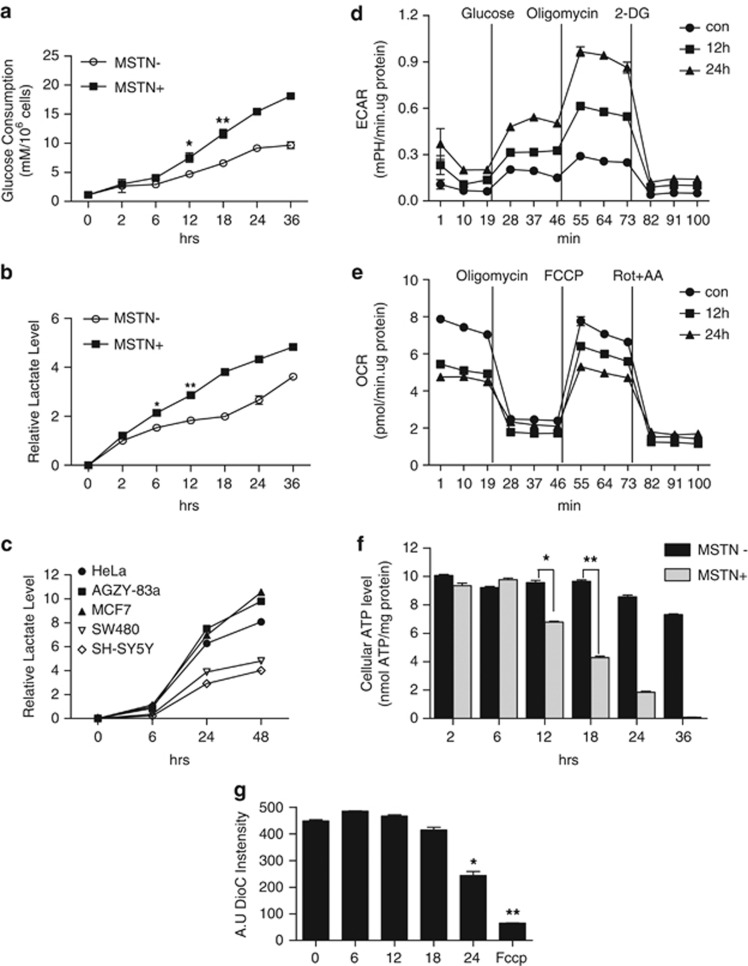Figure 1.
Myostatin induces metabolic alterations in HeLa cells. (a, b) Effect of myostatin on glucose consumption and lactate production. HeLa cells were treated with myostatin (if not specified, at a concentration of 500 ng/ml)8 or PBS for the indicated times. (a) Glucose consumption and (b) Lactate production were monitored. (c) Relative lactate level in HeLa, AGZY-83a, MCF-7, SW480 and SH-SY5Y cells cultured in normal DMEM. (d, e) A series of ECAR and OCR in HeLa cells in the presence or absence of myostatin were examined by Seahorse XF24 analyzer. (d) ECAR following the addition of glucose defines glycolysis and ECAR following oligomycin represents maximum glycolytic capacity. ECAR following treatment with 2-DG represents acidification associated with non-glycolytic activity. Cells are subsequently treated with 4.5 g/l 𝒟-glucose, 1 μM oligomycin and 100 mM 2-deoxyglucose (2-DG). (e) Effect of myostatin on oxygen consumption. OCR prior to the addition of oligomycin (1 μM) and following the treatment of FCCP(0.5 μM) represent the basal mitochondrial respiration and maximal mitochondrial respiration capacity, respectively. OCR following Rotenone (1 μM) plus Antimycin-A(2 μM) treatment represents non-mitochondrial respiration. (f) Cellular ATP levels in the presence or absence of myostatin. Data are shown as mean values±S.E.M., n=3. (g) Mitochondrial membrane potential (ΔΨm) was analyzed by flow cytometry with DiOC63 staining (10 nM). FCCP (2 μM) was used as a positive control of ΔΨm loss

